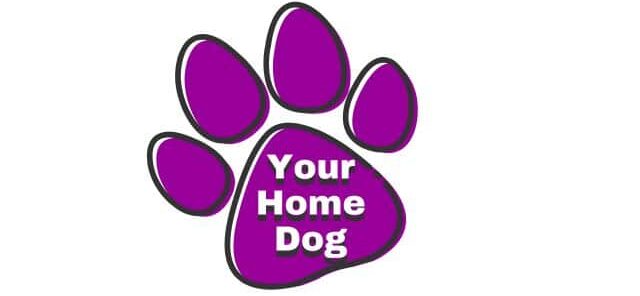Of all of the dogs we adopted, we never once thought about renaming our dogs. Did we slightly alter their nicknames? For sure.
For example, our first dog came to us as Buff, for his coloring. Very quickly he became Buffy.
After Buffy we adopted Gable and Sadie. Gable (his entire litter had G names) became Gabe. Sadie was originally called Beverly. But then the family that had her before we adopted her changed her name to Sadie.
Finally, we adopted Oscar. That was the name the rescue gave him and it just stuck. So to this day he is still Oscar.
On the other hand our daughter just adopted a dog. He came to her with the name Billy (my husband’s name).
Because he looks like a pit bull mix, albeit a tiny one, she wanted to give him a name that no one would ever find scary. So Billy became Walter.

Like the pickle toy that Walter’s resting his head on? It’s the BARK The Rill Dill Dog Toy from Target.
What renaming a dog takes
She adopted Walter in February and by the spring he was answering to his “new” name. I say new because she later found out that the shelter just called him Billy.
It wasn’t like they had any papers from his previous owners that said this dog is called Billy. They just called him that.
So what did it take to rename her dog? Lots of patience and positive reinforcement. Oh and treats–lots of them, too. This is called dog training with positive reinforcement.
For example, every time Walter would respond to his name, she would give him a treat. These responses might vary just from turning his head to look at her to coming to her in the dog park.
All of these positive responses to her calling his name meant Walter got a treat. As a food-driven dog, he learned his name quickly.
Age has nothing to do with renaming a dog
Also, he’s young. The vet believes he’s only two.
Not that age has anything to do with learning a new name. I mean, that old adage of “You can’t teach an old dog new tricks” simply isn’t true.
When we adopted Oscar he was three, and Buffy was four when we adopted him. Both learned how to walk on leash and to sit on command.
How to choose your dog’s new name
One way to rename your dog is to change it only slightly. For example, how our dog Buff became Buffy.
Or, we could have chosen a name that started with the same letter or had the same number of syllables. So Buff could have become Bud and then Buddy. Or Bart or Bob.
Another option is to choose a rhyming name. So, Molly could become Polly or Jolly–if you’re looking for a Christmas holiday name for your dog.
Finally, every dog I’ve ever had, including as a child, always had a two-syllable name. Seems our family was onto something.
Many dog trainers believe that dog’s learn one and two-syllable words the fastest. So, giving them a shorter name is best. Therefore, even though it would be funny to name your dog John Jacob Jingleheimer Schmidt, your dog will be better off as John or Johnny, Jake or Jacob or even Schmidt or Smitty.
Be mindful using your dog’s new name
One thing experts agree is that if you tend to say “no” to your dog when scolding, don’t name him something that rhymes with “no.” So, forget Beau or Mo or anything that has the “oh” sound in it.
Speaking of scolding, if you have to correct your dog’s behavior, try not to use their new name. You don’t want the dog associating the renaming with something negative.
Finally, don’t choose a name that rhymes with a command you plan to use when training your dog. So, if you’ll be working on “stay,” don’t name your dog May or Jay.
Want your dog to learn to sit? Then skip the names Mitt or Kit.
It’s ok to give your dog nicknames
My dog Sadie’s nickname is Kitty. Why?
Because she’s my dog that acts like a cat. I use Kitty so much that she’ll actually respond to that name as much as her given name.
There’s no harm in calling your dog by a few names, as long as they are delivered in a loving way. Truth is, I could call my dog “Treats” and they would respond with wagging tails, because they know that treats equals food. Same thing with “rice” and “car”–they love to ride in the car.
Why renaming can be a positive thing
Some animal experts believe that a dog that’s been removed from an abusive or neglectful environment will blossom with a name change. That is, the dog may associate the sound of its old name with the negative experience it endured.
So, if after bringing the dog home you find she’s not responding to her given name, change it. And then use positive reinforcement (lots of treats and pets) to give her a new name. Over time she’ll eventually come to know her new name. And, hopefully, it will be with a positive connotation that pushes away the negative memories of her old life and her old name.
Final thoughts on changing a dog’s name
So, can you change your dog’s name? You bet you can.
Of course, there are a couple of approaches to renaming a dog. Pet experts don’t agree on which one is the best. Basically, if you find an approach that works for your dog, then it’s the best one for you to use. And soon enough your dog will be responding to their new name.

